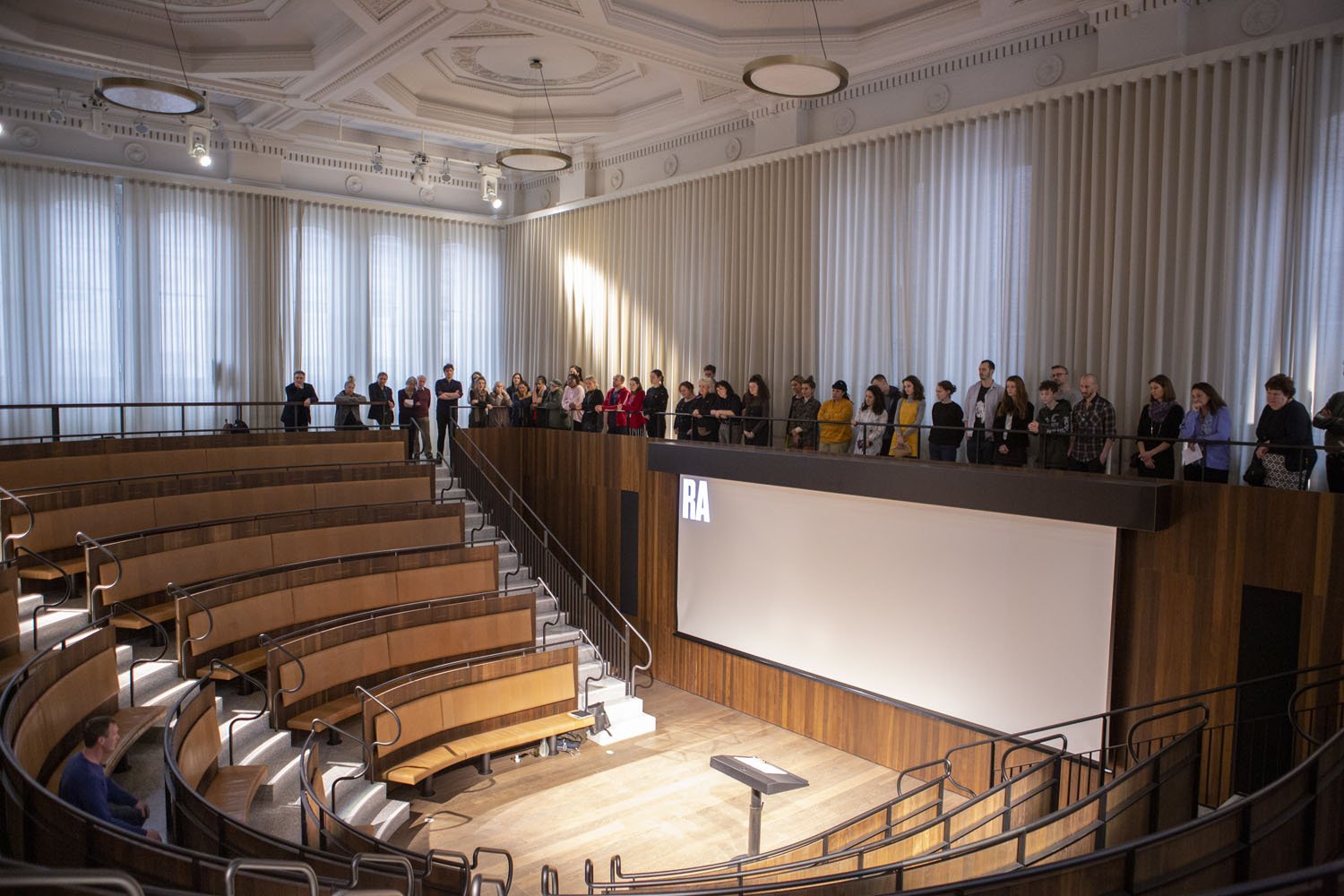
Confronting Boundaries
Alternate Languages
Royal Academy of Arts, London
16 March 2019
I curated and directed a full day program of immersive spatial activations, artworks, performances, workshops and discussions that critiqued our relationship with one another and our physical environments. Taking over the public and private spaces of the Royal Academy they explored isolation and connection, exclusion and generosity, and ask what unites us and divides us.
This was the final event in the Alternate Languages series that was initiated for Island, at the 2018 Venice Architecture Biennale. Collectively they sought to expand the languages we have available to express and share ideas, and to create an opportunity for different voices to be heard.
Activations:
Situated Practice - tactics of engagement in three acts
DisOrdinary Architecture - rethinking institutional spaces
Panel discussion:
Seeking Refuge: Views of Displacement
Workshops:
Spatial Listening Games, with Alex de Little
Movement Drawing Workshop with artist Noëmi Lakmaier
Embodied Space: Movement Workshop with Suzy Willson
Architecture Beyond Sight, with Zoe Partington
Installations and artworks:
Absolute Scenes, by Benji Fox
Mirror III: Horizon 2016 and Mirror IV: Legacy 2018, David Cotterrell with Ruwanthie de Chickera
Singing within the building, Jon Adams
Performance:
Spoken word with Inua Ellams
Irish traveller songs with Thomas McCarthy
Photographs: Yiannis Katsaris c. Royal Academy of Arts
Inua Ellams
Seeking Refuge: Views of Displacement, David Cotterrell
Situated Practice
Situated Practice
'Absolute Scenes', Benji Fox
'Mirror IV: Legacy,' 2018, David Cotterrell
Spatial Listening, Alex de Little
Spatial Listening, Alex de Little
Thomas McCarthy
Movement Drawing Workshop with Noëmi Lakmaier
Situated Practice
My write-up from the day
My eyes were closed, a hand was gently on my back, guiding me through spaces that I could visualise after 15 years working at the Royal Academy, but was experiencing anew. We moved across the front hall of Burlington Gardens. Something changed underfoot momentarily and was repeated a step or two later that I could not identify, but later discovered were grates in the floor. A few steps further, in a new space, my attention shifted to a playback of a recording of four voices singing a different note, each interacting with the specific resonant frequencies of the space. I stood still enjoying how the architecture played like an instrument around me, enabling me to grasp its scale and surfaces through sound. I stretched out my arm, moving hesitantly forward until my hand touched the round timber wall beneath the lecture hall. My guide ran her own hand across the surface, to create a tick with each timber strip and providing an aural trail for me to follow. The space became measured in individual steps and I was surprised by how many I took as the long the wall continued even with the short break for the toilets – the scale of the building understood in my body. Instigated by a partially-sighted artist, the experience left me feeling centred and attuned to the spaces and people around me, aware of how much of the world we miss when we rely primarily on vision.
It was with renewed openness that I encountered the other installations and activities as part of the ‘Alternate Languages’ day of programming occupying the ‘public’ spaces of the Royal Academy. A young spatial practitioner traversed the site from one side to the other without touching the ground while his colleagues gathered to critique the visible and invisible barriers of the institution. Empathy was made palpable in an artist film with two young actors playing the child of a victim or perpetrator of the Rwandan genocide, without us being able to decipher who.
The spaces were claimed by those for whom the Academy is not a natural home. Jon Adams an artist with autism photographed his chair, a prop to help him feel secure, in location across the site while Thomas McCarthy, an Irish traveller filled the vast staircase in Burlington Gardens with his soulful tunes.
Over the course of the day the interventions invited a more expansive and nuanced reading/ appreciation of the institutional architecture. For whom are the spaces built, how do they feel to others, how do we occupy them? What prejudices do we carry, how tolerant are we?
Our buildings are generally designed for those who fit a perceived physical or behavioural norm. Not only does it exclude many but it seeks to limit us all.













